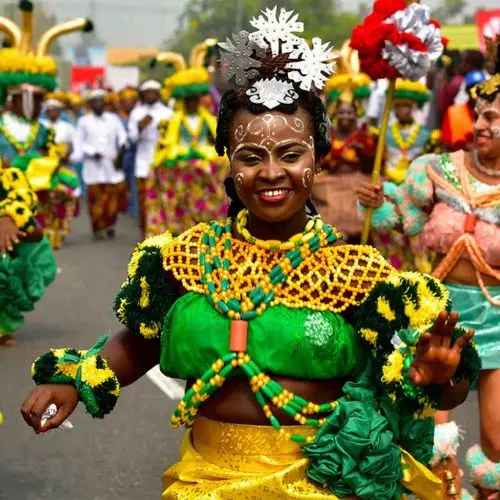
The carnival is a fusion of local traditions,
mythology, and modern influences. Participants,
adorned in elaborate and colorful costumes,
represent different aspects of the rich cultural
heritage of the region. The float parade is a
stunning spectacle, showcasing creativity and artistic
skill, while traditional dances reflect the ethnic
diversity of the Nigerian people.
Beyond the festive atmosphere, the Carnival Calabar
also highlights social initiatives, such as community
outreach programs and competitions that promote
community cohesion. Over the years, the event has
become a platform to boost tourism in the region,
promoting the local economy and attracting visitors from around the world.
The Carnival Calabar is more than just a celebration;
it is a vibrant expression of Nigeria’s cultural identity,
showcasing the richness of its traditions and the infectious joy of the Nigerian people.
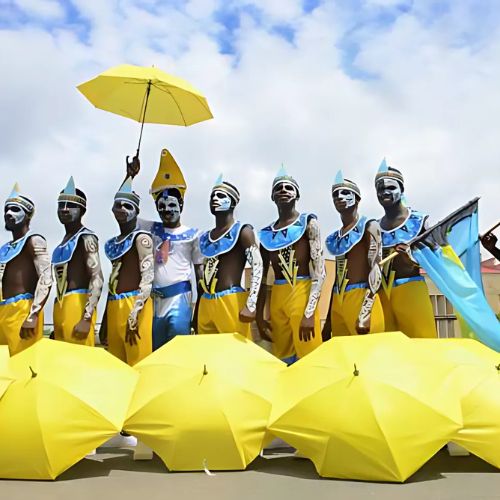
The festival aims to promote unity and understanding among the diverse
ethnicities and cultural groups present in Nigeria. Participants,
representing various parts of the country, showcase traditional attire,
dances, and music, providing spectators with a comprehensive view of the
country’s cultural richness and diversity.
In addition to cultural expressions, the Abuja Carnival serves as a
platform for trade and tourism, showcasing local handicrafts and
attracting visitors from across the country and beyond. This annual
celebration significantly contributes to the promotion of cultural
tourism in Nigeria and strengthens the bonds of national identity.
The Abuja Carnival is a festive celebration that not only highlights
the beauty of Nigerian cultural diversity but also reinforces national
pride and cohesion among communities throughout the country.
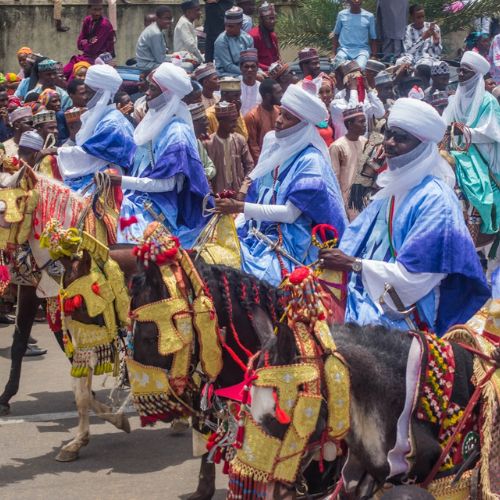
A notable feature of Carniriv is its focus on promoting tourism and
generating economic revenue for the region. The festival attracts visitors
from various parts of the country and beyond, providing a platform for
trade, cultural exchange, and showcasing the natural and historical beauty of Rivers State.
In addition to entertainment activities, Carniriv also addresses social
and environmental issues, aiming to raise awareness among the public about
important issues. This demonstrates the festival’s holistic approach, not only
celebrating culture but also positively influencing society.
Over the years, Carniriv has emerged as one of the leading cultural festivals
in Nigeria, making significant contributions to the promotion of culture,
tourism, and intercultural understanding in the Rivers region and the country
as a whole. This festival serves as a showcase of Nigeria’s cultural richness
and a catalyst for economic and social development.

One of the most fascinating aspects of the festival is the use of traditional
tools and techniques in the fishing competition. Fishermen, armed with hand
nets and sometimes traditional traps, enter the river and engage in a skillful
and thrilling race to catch the largest fish. The winner is not only celebrated
for his fishing skills but also receives various prizes and accolades.
The Argungu Fishing Festival is not limited to the fishing competition alone. The
event also features cultural displays, traditional music and dance performances, and
a vibrant marketplace where local artisans showcase their crafts and products. This
creates a festive atmosphere that celebrates the rich cultural heritage of the region.
In recent years, efforts have been made to expand the festival to include activities
that promote tourism, agriculture, and economic development in the region. The
Argungu Fishing Festival stands as a testament to the importance of preserving
cultural practices while fostering community engagement and regional development in Nigeria.
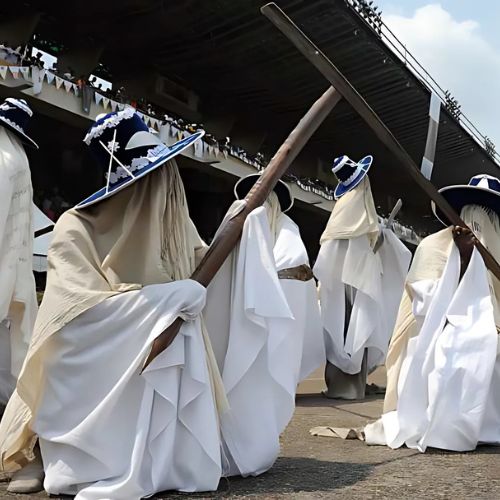
The festival is typically held to commemorate significant events, including the passing
of a prominent individual, a chief, or a king. It is often associated with funerals and
celebrations of life. The primary purpose of the Eyo Festival is to pay homage to the
departed souls and seek their blessings for the living.
During the procession, the Eyos move through the streets in a solemn and rhythmic manner,
accompanied by traditional music and chants. The white robes, hats, and staffs contribute
to the unique and captivating visual spectacle of the festival. The event attracts large
crowds, both locals and tourists, who gather to witness the cultural display and pay
respects to the traditions of the Yoruba people.
The Eyo Festival also incorporates elements of entertainment, with cultural performances,
music, and dance adding to the festive atmosphere. It serves as a moment of cultural
pride, fostering a sense of community and preserving the rich heritage of the Yoruba people in Lagos.
As with many traditional festivals, the Eyo Carnival has evolved over time and now includes
modern elements while maintaining its cultural essence. It remains a significant cultural
event that reflects the vibrant history and traditions of Lagos and the Yoruba people.
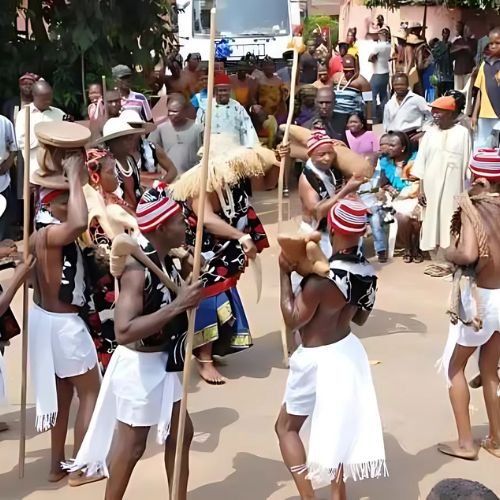
Key features of the Yam Festival include rituals, ceremonies, and cultural performances. The
festival begins with the “Iwa Ji” or “New Yam Eating” ceremony, where the first yams of
the season are offered to the gods and ancestors before being shared among the community
members. This ceremony symbolizes the official commencement of the consumption of new yams.
During the festival, there are traditional dances, music performances, masquerade
displays, and colorful parades. Participants often wear traditional attire, and
various cultural groups showcase their unique dances and performances. The festival
is an occasion for social bonding, as families and communities come together to
celebrate their agricultural achievements.
Additionally, the Yam Festival is an opportunity for cultural preservation and
transmission. Elders use the occasion to pass down traditional knowledge, stories,
and values to the younger generation. It also reinforces the importance of
agriculture and the agrarian way of life in Igbo culture.
The Yam Festival is more than a simple agricultural celebration; it is a manifestation
of the Igbo people’s deep connection to the land, their spirituality, and their
communal ties. It serves as a cultural anchor, reinforcing the significance of
yams not only as a staple food but as a symbol of prosperity and cultural identity.
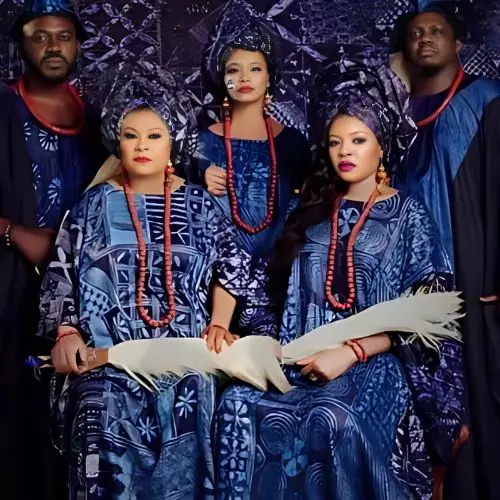
Adire weaving is an ancient Nigerian art form, notable for its intricate
process of dyeing through tying techniques. This method results in vibrant, symbolic
patterns on fabrics. The artisans’ skill in creating complex designs is evident, and
Adire weaving not only preserves ancient traditions but also offers a unique expression
of Nigerian creativity, represented by its distinctive textures and colors.
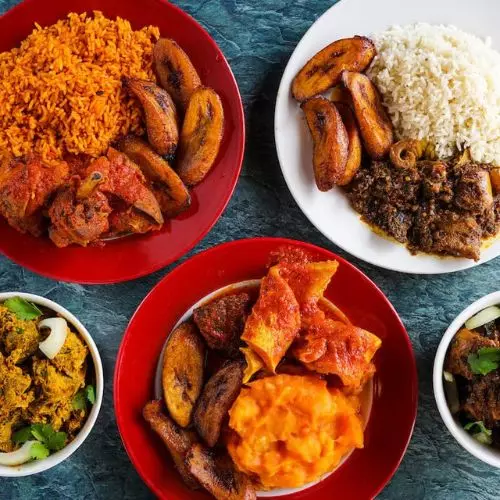
Nigerian cuisine is a feast of intense flavors, reflecting the country’s ethnic diversity. Iconic dishes like “Jollof Rice” and “Suya” stand out for their careful combination of local ingredients and spices. This culinary fusion not only satisfies the palate but also represents the richness of food traditions. On a festive
table, the variety of colors and aromas creates a unique sensory experience, highlighting the cultural importance of gastronomy in Nigerian society.
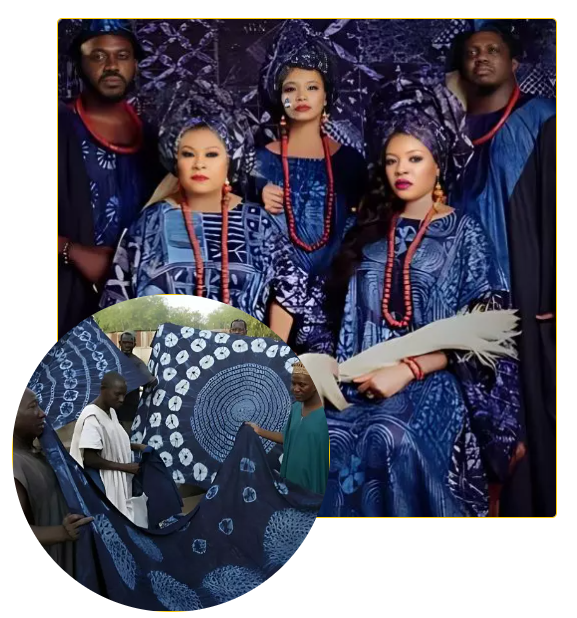
Adire weaving is an ancient Nigerian art form, notable for its intricate
process of dyeing through tying techniques. This method results in vibrant, symbolic
patterns on fabrics. The artisans’ skill in creating complex designs is evident, and
Adire weaving not only preserves ancient traditions but also offers a unique expression
of Nigerian creativity, represented by its distinctive textures and colors.